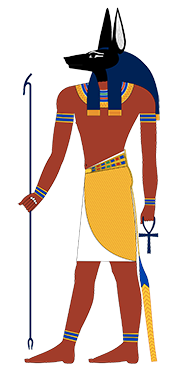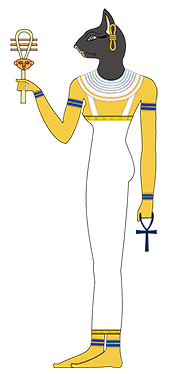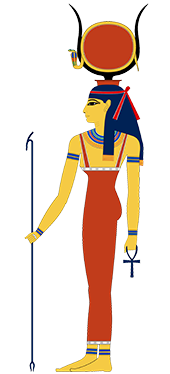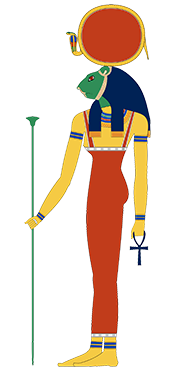Religion in Ancient Egypt
Part 1: Gods and Goddesses Religion in Ancient Egypt ran through every fabric of life. The people saw the whims of various deities in the variations in the weather, in the rise and fall of kings and empires, and in the smallest decisions of everyday life. A variety of religious festivals punctuated the calendar year. The residents of a town or city commonly adopted one god or goddess as their patron and venerated him or her with one or more temples. All of this focus on religion necessitated a large group of priests and other religious officials, whose job it was to tend to the temples and the ceremonies. Above it all sat the king, the pharaoh, who was the gods' representative on Earth. The Pantheon 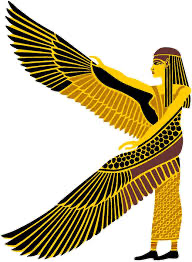
From time to time, the Egyptians believed that one god was more important than most others, perhaps all others. This was the case early on with Isis (right), the mother goddess, and with the sun god, Ra/Re, and with Amen/Amun, the creator god. Even though the people believed in a chief god, they still believed in many gods; and the pharaohs perpetuated and encouraged this polytheism. One well-known exception was the latter part of the reign of Akhenaten, who began his life and his reign as Amenhotep IV but during his time on the throne declare a monotheism centered on one god, Aten, and changed his own name to reflect this. Heka was the god of magic and medicine and, more importantly, was present at the creation of everything and was also the one who empowered the gods and goddesses to do what they meant to do and also enabled communication between those deities and people. One of Heka's prime responsibilities was maintaining the ideas of ma'at, or the harmony of the universe. The various ceremonies that people had and the rituals they performed had as a main purpose the maintenance of this balance between order and disorder. The more well-known gods and goddesses included these:
Next page > Temples, Priests, and Festivals > Page 1, 2, 3
|
|
Social Studies for Kids
copyright 2002–2025
David White



